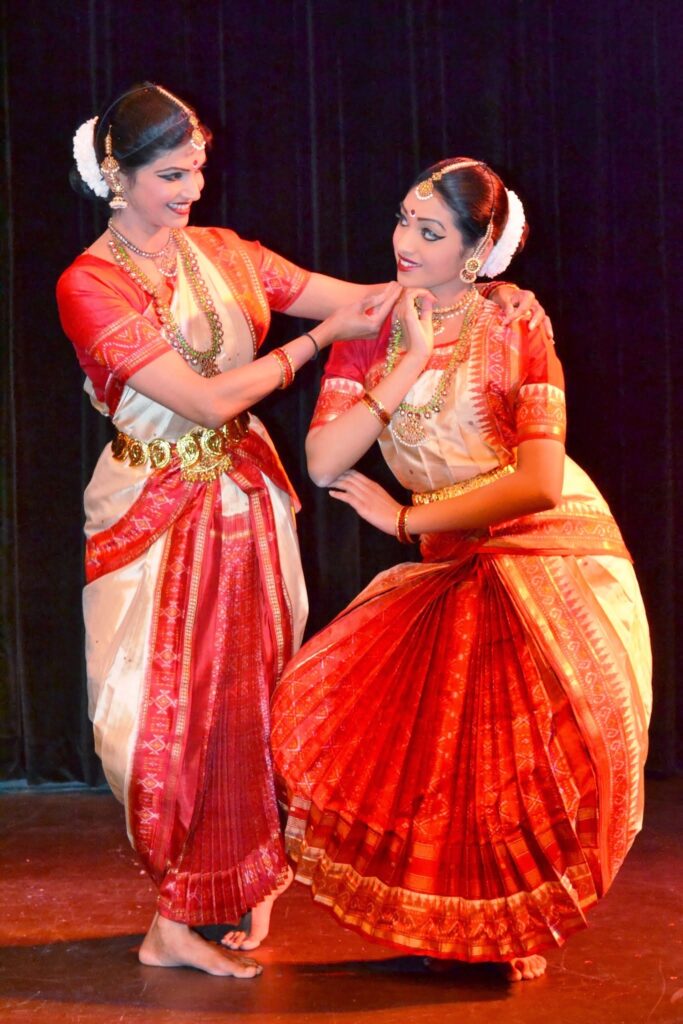Program / Event Details
Provider: Arts for Learning Maryland

Contact Details
Baltimore, MD 21202

Our assembly is based on the South Indian dance style Kuchipudi, which is inherently a dance drama form. We introduce Kuchipudi to the students as comprising three main elements: 1) rhythm and footwork, 2) hand gestures, and 3) facial expressions, all three of which combine to tell stories through dance. For the rhythm and footwork section, we teach the students how to say a simple 4-beat sequence in traditional Kuchipudi syllables through call and response. They then keep the beat for the dancers as we create patterns and variations within the beats. The dancers then perform a short segment of a dance in which the students can identify these same rhythmic patterns. We then introduce them to the vast vocabulary of hand gestures used in Kuchipudi. Students learn between 2-3 gestures in their seats and learn a variety of applications for each gesture. They then learn how Kuchipudi dancers use facial expressions to show emotion. Student volunteers are either asked to come up in front of the group or demonstrate in their seats how they can show various emotions by just using their faces and bodies like dancers. Students then see how the gestures, when combined with facial expressions, communicate meaning by watching a small segment of a dance. The dancers then talk about how Kuchipudi uses all three elements (rhythm, hand gestures, and facial expression) to enact stories through dance. We introduce them to the Indian fable the Monkey and Crocodile and the two characters in the story. We ask the students to pay attention to how the dancers use rhythm, gestures, and facial expressions while they are dancing. We then perform the Monkey and the Crocodile to original music that has been specially commissioned and composed for Dancing Stories. Once finished, we go over the three elements and how they are applied in the Monkey and Crocodile. We then bring a few students up to learn how to dance like the Monkey and Crocodile while the others keep the beat for them like they learned during the call and response section.
